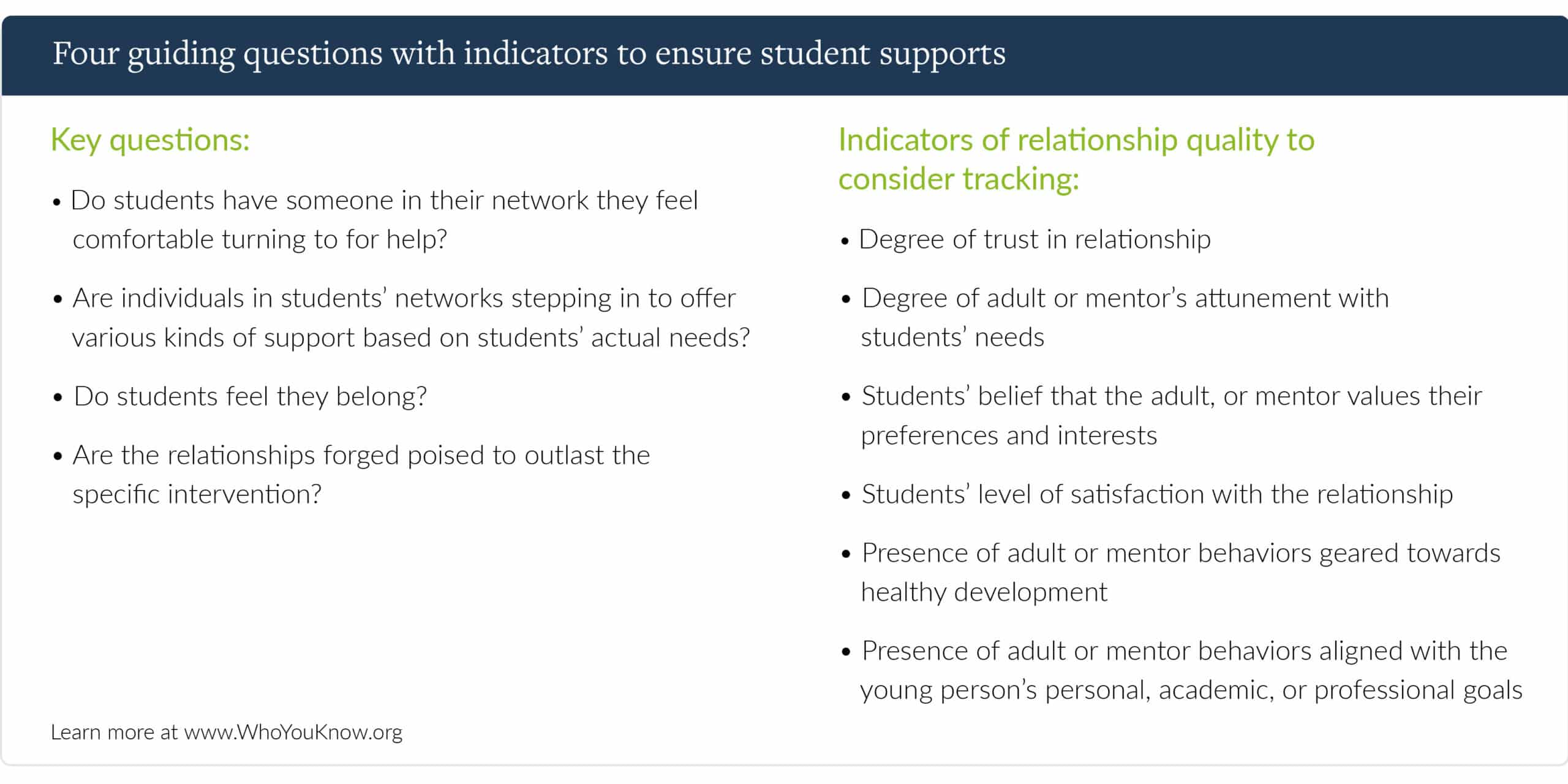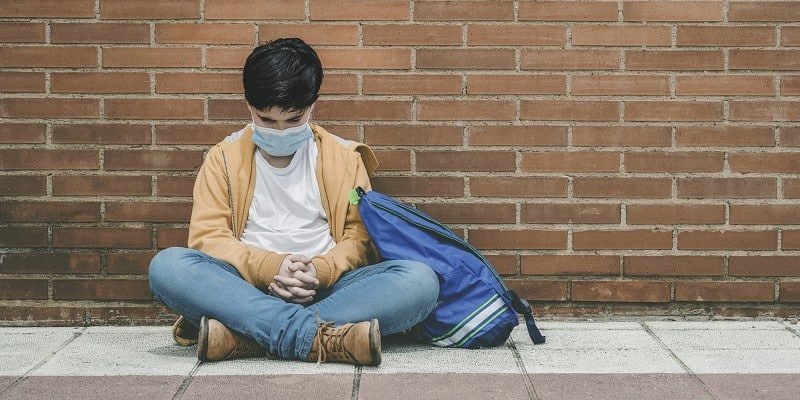Just months after schools abruptly shut their doors this spring, parents’ cries of mental health declines among their children echoed through social media. In a June 2020 Gallup poll, nearly 43% of parents warned that their children were “already experiencing [emotional or mental] harm” and/or “reaching their limits” from social distancing practices. Fall contamination efforts aren’t painting a brighter future: School closures are deeply eroding students’ social networks and public health leaders predict these fractured connections with peers and teachers will increase students’ risk of social isolation and loneliness.
Fortunately, many educators are acknowledging the issues concerning students’ social and emotional health, coming up with new approaches to supporting student well-being and connections, even from afar. Students’ normal social lives may have been put on pause, but efforts to ensure high-quality relationships are getting prioritized.
Implementing new approaches, however, is only half the battle. Schools also need to understand if and how the relationships they’re offering are actually meeting students’ needs. In fact, innovative practices absent a deliberate strategy for tracking the quality of relationships can negatively affect or curtail student support. In other words, a hope-for-the-best approach can decrease students’ sense of social and academic adjustment.
How can schools, then, mitigate these risks and ensure their efforts to support students’ well-being are successful? Here are four guiding questions with associated indicators—grounded in research—to help schools provide students with access to a reservoir of connections in service of both their learning and longer-term well-being.
Four guiding questions with indicators to ensure student supports

1. Do students have someone in their network they feel comfortable turning to for help?
Supportive relationships are a linchpin of student success, both academically and in their personal lives. Recent research conducted by Dr. Morgan Polikoff on one Midwestern school district suggests that elementary students know who to tell if they are feeling sad or nervous, but this is less true for middle and high school students. These findings highlight the importance of recognizing that even if a student has a peer or adult they can turn to, they may not feel comfortable turning to them for support.
To help ensure students are building relationships grounded in trust, research across mentoring programs suggest that focusing on indicators of quality is a fundamental first step. Indicators include how a student is experiencing a relationship and the extent to which the student is receiving the care, support, or resources she needs. The National Mentoring Resource Center offers a toolkit with a host of such indicators as well as a validated survey that can be used by schools. Some survey instruments likewise capture information about mentors’ or adults’ perceptions of the relationship.
Asking students directly if they feel comfortable turning to the adults they are connected to for help is the clearest approach for ensuring adults’ perceptions match students’ reality. Matriculate, a virtual platform that supports high-achieving, low-income students in navigating the college application process, for example, directly asks students to agree or disagree with the following statement: “I feel comfortable asking my advisor questions related to my application process.”
2. Are individuals in students’ networks stepping in to offer various kinds of support based on students’ actual needs?
Different connections offer different value. While mentoring programs offer valuable insights to understanding students’ needs, they’re not the only way to gauge relationship quality, especially as relationships evolve and mature. The Search Institute has developed a framework identifying five elements that contribute to “developmental relationships”: expressing care, challenging growth, providing support, sharing power, and expanding possibilities. Search Institute’s recently released Developmental Relationships Survey obtains insights from youth in grades four through twelve on the quality of developmental relationships within reach, their social-emotional competencies, and equitable practices such as the extent to which students are building social capital.
Surrounding students with an interconnected web of diverse, positive relationships can help surface students’ actual needs and make sure those needs are fulfilled. An example of this in practice comes from the Phoenix Union High School District (PUHSD), which serves 30,000 students. Even as one of the largest high school districts in Arizona, PUHSD is working to connect with Every Student, Every Day to provide the resources and support they need. Staff are assigned to ten students to call each day and ask simple questions such as, “How are you doing emotionally? Do you need any food? How is your online learning going? Do you have a laptop and connectivity? Has anyone lost their job recently?” This fall, as the district elects to remain remote due to community COVID cases, their “PXU Remote Learning 2.0” plan will include career and college counseling in response to student requests.
3. Do students feel they belong?
Students’ sense of belonging is shown to affect their well-being, academic performance, and commitment to staying in school. While school buildings were closed this past spring, only one in three students said they really felt like part of their school community (30 percent) and felt connected to school (31 percent). On average, students reported that this is worse than usual.
One effort to assess and strengthen students’ sense of belonging during remote learning was recently launched by The New Teacher Project (TNTP). Their freely accessible Fall Learning Experience Survey enables districts and schools to surface actionable input from students and parents on their sense of connections and support. Students, for instance, are asked, “How true are the following statements for you?” Statements include: “There is at least one adult at my school that I can talk to about how I’m doing.” and “My teachers make me feel like I belong in their class(es).”
4. Are the relationships forged poised to outlast the specific intervention?
Young people need relationships that provide critical care, support, and encouragement right at the moment. But they also need longer-term relationships that can expand their options and connect them to new opportunities for the future—like advice, jobs, and learning experiences. In other words, assessing the quality of student supports today can ensure students have the networks they will need tomorrow.
This doesn’t mean short-term relationships can’t offer value. They certainly do, as any job-seeker can attest to. But schools hoping to expand access to opportunity should also aim to broker relationships that outlast discrete experiences. For example, an engineer in the local community may be asked to present to an online classroom on what it means to be an engineer. This is a discrete experience. Putting in place a system that enables any interested student to have access to a career professional for follow-up questions, career advice, and additional learning experiences (e.g. internships) outlasts discrete experiences. To ensure these longer-term connections, schools must start to treat relationships as outcomes in their own right, quantifying and tracking them over time alongside academic metrics.
For instance, students at Comp Sci High School complete a summer internship reflection survey in which they respond to the question, “I met with an adult or older peer who I will reach out to in the future to help me with my job/career goals.” Educators at this Bronx, NY charter school know that students with access to high-quality relationships—ones built on trust and aligned with their needs—can translate to a reservoir of relationships that students can mobilize as their needs evolve.
Navigating a pandemic is uncharted territory. Schools and educators have the will to support students academically and socially. With these questions and indicators to ensure the quality of students’ networks, they now have a way. Additional survey and data collection approaches to measure the quality of students’ relationships can be viewed in the Appendix of our recent report which highlights early innovators designing and measuring for students’ relationships.



